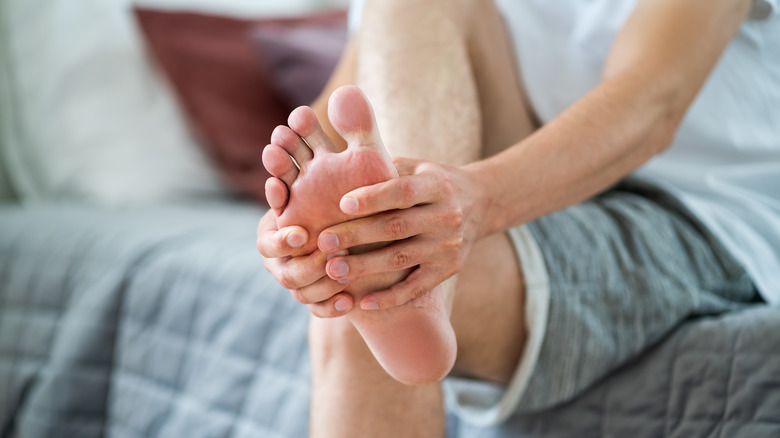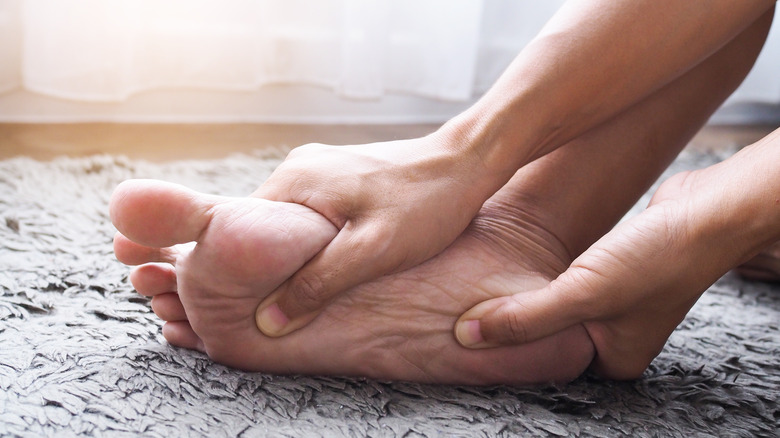If This Happens To Your Big Toe, It Could Be A Sign Of Gout
Gout is a painful form of arthritis, and often the big toe is the first joint affected. So what actually happens to the foot when experiencing gout?
The body breaks down a chemical called purine, found in many foods and drinks, by creating a substance called uric acid (via Cleveland Clinic). This byproduct is typically processed by the kidneys and leaves the body through urine. If the body makes too much uric acid or if the kidneys can't process it properly, it builds up in the system, a condition called hyperuricemia. The excess uric acid can create sharp, pointy crystals that form in the joints, causing inflammation.
Not everyone who has high levels of uric acid will develop gout though, according to the National Institute of Arthritis and Musculoskeletal and Skin Diseases (NIAMSD). Men are more likely to get it than women, and women typically don't develop gout until after menopause, when uric acid levels rise. You're also more susceptible to gout if you have a family history of it, have high blood pressure, take diuretics, are overweight, or eat a lot of animal proteins.
The joint inflammation and pain are called a gout flare, which often starts at night and comes on suddenly (via NIAMSD). The joints may be swollen, red, warm, or stiff. A flare can be triggered by alcohol consumption, certain foods and medications, and physical trauma.
What happens to the big toe?
While gout can affect any joint, the big toe is often the first to experience inflammation and pain (via Medical News Today). If you experience a gout flare in the big toe, you may feel intense pain in the joint due to the buildup of needle-like uric acid crystals. The pain will come on rapidly and it may feel difficult to move the toe. There will typically be redness or discoloration, as well as swelling and tenderness. It may even be difficult to walk or stand.
According to the American Academy of Family Physicians (AAFP), gout affects more than 8 million Americans. It can be treated with nonsteroidal anti-inflammatory drugs (NSAIDs) or corticosteroids and should be treated within 24 hours of a flare, so it's important to contact your healthcare provider right away if you experience an attack. The risk of gout can be reduced by maintaining a healthy weight, restricting consumption of food products or drinks containing high fructose corn syrup, limiting animal proteins that are high in purine such as organ meats and red meat, and avoiding alcohol, per AAFP.


